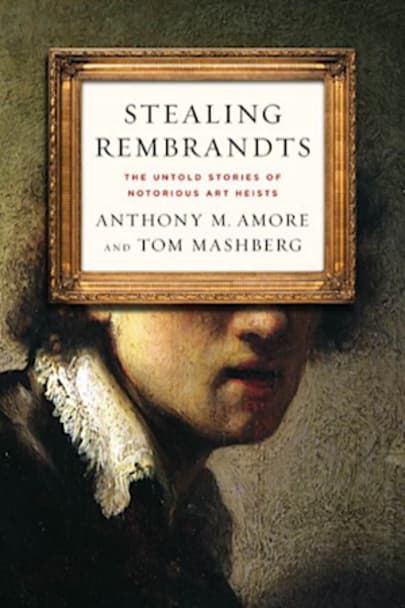A spellbinding journey into the high-stakes world of art theft Today, art theft is one of the most profitable criminal enterprises in the world, exceeding $6 billion in losses to galleries and art collectors annually. And the masterpieces of Rembrandt van Rijn are some of the most frequently targeted. In Stealing Rembrandts, art security expert Anthony M. Amore and award-winning investigative … award-winning investigative reporter Tom Mashberg reveal the actors behind the major Rembrandt heists in the last century. Through thefts around the world – from Stockholm to Boston, Worcester to Ohio – the authors track daring entries and escapes from the world’s most renowned museums. There are robbers who coolly walk off with multimillion dollar paintings; self-styled art experts who fall in love with the Dutch master and desire to own his art at all costs; and international criminal masterminds who don’t hesitate to resort to violence. They also show how museums are thwarted in their ability to pursue the thieves – even going so far as to conduct investigations on their own, far away from the maddening crowd of police intervention, sparing no expense to save the priceless masterpieces.
Stealing Rembrandts is an exhilarating, one-of-a-kind look at the black market of art theft, and how it compromises some of the greatest treasures the world has ever known.
more



In 2005, Anthony Amore took on the second least desirable job in the museum world: security director at Boston’s Isabella Stewart Gardner Museum. (Least desirable: being security director in 1990 when thieves stole 13 artworks from the museum, at $350 million the single largest heist in American history.) As part of his effort to try to recover the stolen paintings, he began to study a very narrow niche of the art-crime world — thefts of Rembrandts. Stealing Rembrandts is the result of his homework.
ISGM lost three of the Dutch master’s works, which joined in limbo the other 94 Rembrandts that have gone missing worldwide. Mr. van Rijn’s daubs have been stolen for decades by a wide range of personalities for the whole gamut of reasons. The author recounts some of the more interesting cases in this book. In each instance, he gives us some background on the stolen goods (Rembrandt’s life was a rags-to-riches-to-rags tale, and he created several of the stolen paintings at key points in his career), then describes the theft, the players involved in both the crime and the investigation, and how everything turned out in the end. Along the way, you’ll learn a good deal about the realities of the stolen-art market, museum security, and what really happens when you stash an Old Master in the attic.
Amore is a security guy, not an art guy. When he writes about the paintings themselves, he comes at it from the viewpoint of an educated layman; no highfalutin’ MFA-speak for him. The rest of the text is equally plainspoken. The descriptions of the robberies are straightforward and easy to follow. His co-author, Tom Mashberg, was an investigative reporter for the Boston Herald, and it shows: each chapter reads like a newspaper feature.
This is also this book’s major (though survivable) shortfall. The stories are interesting enough, but they’re told without the sense of drama and character that made Hot Art: Chasing Thieves and Detectives Through the Secret World of Stolen Art read like a detective novel. This may or may not appeal depending on whether you like your true-crime tales hot or cool.
The art-crime books that work best for me are the ones that feature a strong central character or characters who can bridge the inherently episodic nature of the narratives. That’s not the case here. What you get is a series of short stories loosely tied together by the artist whose works are disappearing into the night. While this book isn’t about the author (unlike, say, Priceless: How I Went Undercover to Rescue the World’s Stolen Treasures), Amore may have been a bit too thorough in removing himself from the narrative. Again, you’ll have to decide whether this bothers you.
About the only other complaint I have is about the miserably small selection of photos. I’ve said it before, but I’ll repeat: in any book about art, we need to see the art.
Stealing Rembrandts is a solid journalistic exploration of art theft as it really is. If you’re into real-life, big-ticket thievery, this book delivers plenty. Expect “interesting” rather than “exciting” and you won’t be disappointed.
Anthony M. Amore and Tom Mashberg write about famous real-life art heists, which is interesting in itself. But the authors give the backgrounds on the artwork and tell about the museum from where it was stolen. I was shocked to learn that Rembrandts (paintings and etchings) are the most frequently stolen pieces. That I was also astounded to learn that many of these museums had little or poor security, just begging for something like these thefts. The book was entertaining while informative. If you’re interested in great art or the thefts of paintings in general, I think you’d like this book.